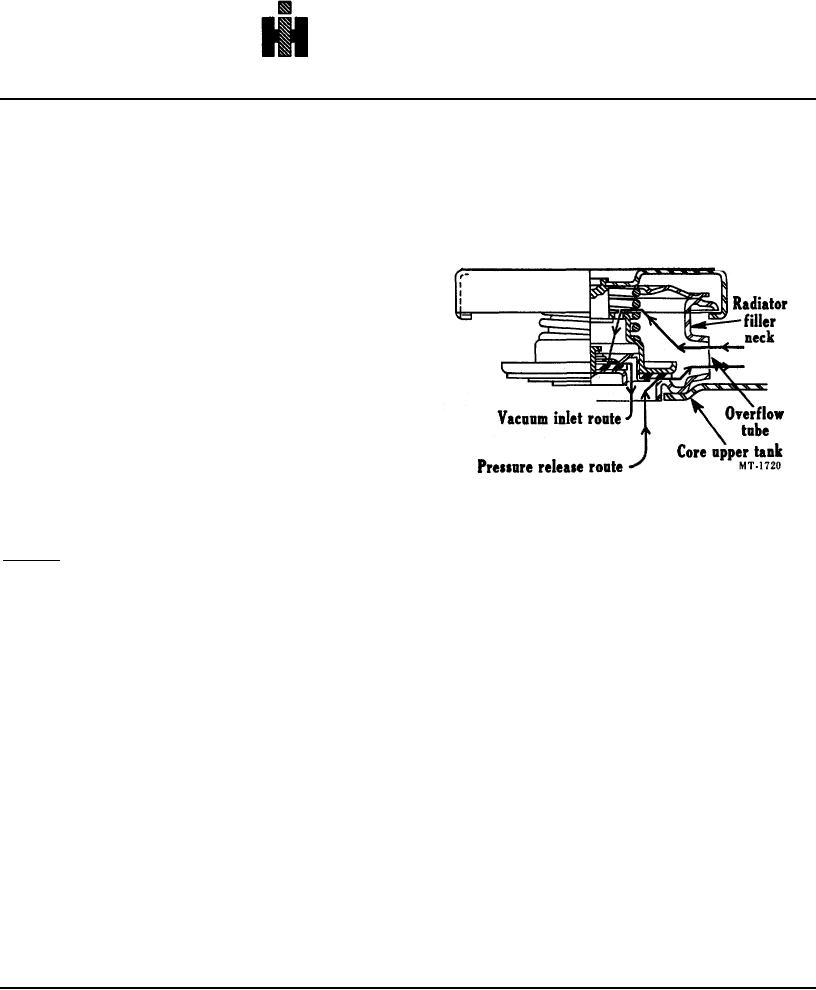
MOTOR TRUCK SERVICE MANUAL
COOLING SYSTEM
GENERAL
COOLING SYSTEM
PREFACE
the filler neck. This prevents the escape of air or liquid
Because the effects or damage that result from an
while the cap is in position. When the cooling system
improperly maintained cooling system usually occur
pressure reaches a predetermined point, the cap valve
gradually, this system is often times neglected.
opens and will again close when the pressure drops
However, the cooling system must be treated with the
below the predetermined point.
same attention to maintenance as is given such other
systems as fuel, ignition and lubrication. A review of the
cooling system's function will show this more clearly.
In general the circulation of water through the cooling
system relies entirely upon the water pump. The water
pump draws water from the radiator and force s it
through the water jackets and cylinder head. There it
accumulates heat. Then the water flows to the upper
radiator tank and down through the radiator core, being
cooled by air from the fan. This process of removing
heat from water as it circulates holds the engine to its
most efficient operating temperature.
The following paragraphs point out several facts
about cooling system components, The affects of cooling
system neglects and procedures to be followed for
cooling system maintenance. Trouble Shooting helps
Fig. 1 Radiator Cap (Pressure Type)
have also been prepared.
COOLING SYSTEM COMPONENTS
When removing the pressure type cap from the
Radiator
radiator, perform the operation in two steps. Loosening
This component which is one of the most important
the cap to its first notch raises the valve from the gasket
in the cooling system is made up of the following parts:
and releases the pressure through the overflow pipe. In
1. Top and bottom tank look for leaks, particularly
the first stage position of the cap it should be possible to
where tank is soldered to core. Vibration and
depress the cap approximately 1/8". The prongs on the
pulsation from pressure can fatigue soldered
cap can be bent to adjust this condition. Care must be
seams.
taken that the cap is not too loose as this would prevent
2. Filler neck the sealing seat must be smooth and
proper sealing.
clean. Cams on filler neck must not be bent or
CAUTION: When removing the cap, loosen it slowly
worn so as to allow loose fitting cap. Make sure
and then pause a moment. This will avoid possible
overflow tube is not plugged.
burning by hot water or steam. Continue to turn the cap
3. Radiator cap is the pressure sealing type. Its
to the left until you can remove it.
purpose is to hold the cooling system under a
4. Tubes because the se are very small they can
slight pre s sure, increasing the boiling point of
become easily clogged, or partially so, by rust
the cooling solution and preventing loss of
and scale. The general condition of cooling
solution due to evaporation and overflow.
system and operating temperature are
The cap (Fig. 1) has a spring-loaded valve, the seat
indications as to whether or not tube s are clean.
of which is below the overflow pipe in
Another good test is to feel core for cold spots.
5. Fins these thin metal sheets radiate or pass off
heat picked up by tubes. They should be kept
free of bugs, leaves, straw, etcetera so as to
allow the free passage of air. Bent fins should
be straightened.
239

